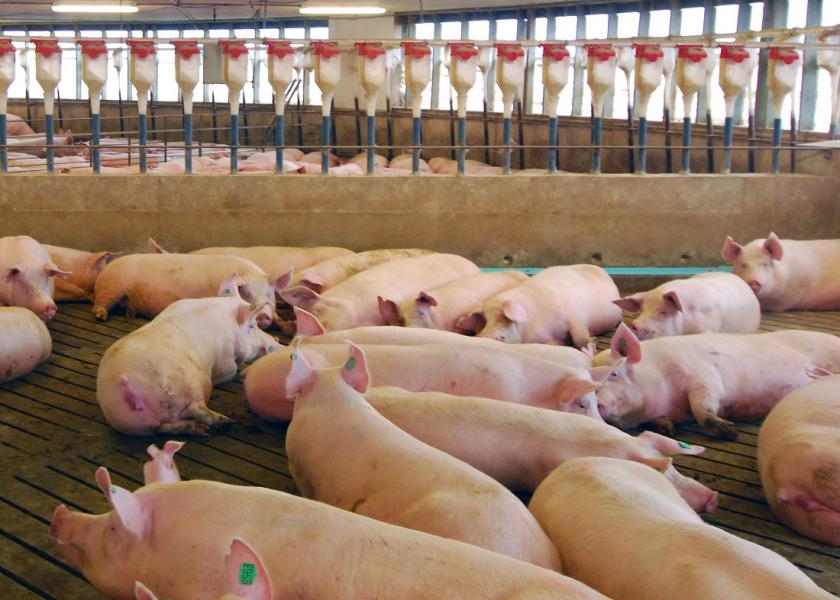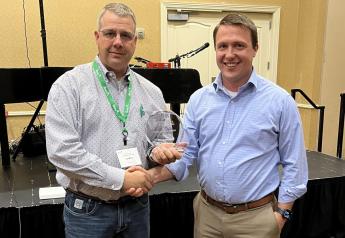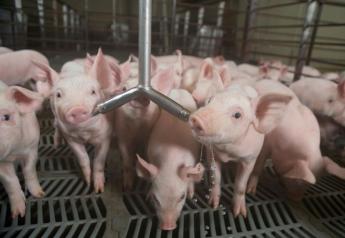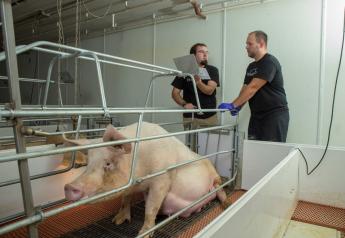You Don’t Have to Live With Lameness

The biggest misconception many producers have about lameness in sows is it is something we simply have to live with, says Benny Mote, assistant professor and swine Extension specialist at the University of Nebraska-Lincoln.
“With proper attention to detail in the nucleus and with gilt selectors at the multiplier level, structure can be improved at the commercial level,” Mote says.
Sow structure is the second most common removal reason for most farms. Aside from this direct impact on replacement rate, Mote says lameness is considered an underlying or compounding factor for other removal reasons, too. When sows are lame, they tend to not eat as well.
For example, if sows are group fed, a sow that doesn’t get up to eat as quickly or lays back down after only eating a small amount will lose body condition as her feed allotment can be consumed by sows around her. Thin sows are more prone to shoulder sores and this can be compounded if the sows continue to not consume feed during lactation. Sows that lose too much body condition in lactation can have their future production impacted by delayed return to estrus and/or reduction in following litter size.
“Although the cull code entered into the database for a sow could be reproductive in nature, the real root cause for her removal was a lameness issue,” Mote explains.
If you want to keep your sows in the herd longer, here are three ways to reduce factors that contribute to lameness.
1. Choose gilts that are structurally sound.
The quality of the replacement females entering the sow herd sets the maximum output and thus profit achievable for the herd, Mote says. How females are managed from their entry to the farm forward can never overcome the physical limitations of structure.
“When shopping for a new farm truck, we would never purchase a chromed-up pickup with a bad axle hoping it can still haul its load and we should think about the replacement female in the same manner,” he adds.
Train employees to identify the ideal structural design for feet and legs and make sure gilts can walk easily and correctly. Make sure hooves are in good shape, too.
2. Look out for lesions.
Pay attention to lesions – the deep, white line cracks and heel-sole cracks appear to be the most painful for sows, Mote says. Although this can’t be seen when the sows are standing, producers will see sows shift weight off of the affected limbs or give to them when walking.
“In standard gestation stalls, these lesions are hard to inspect as you need to see the bottom of the foot,” Mote says. “They are easier to inspect while in farrowing, however that is when it is most critical to have the sow sound and feeling her best to maximize feed intake and lactation.”
A sow lift is the easiest and safest way to inspect feet for injuries and to treat them if needed, although it may not be practical for all farms.
Lesions can also get infected, especially in dirty and wet environments. Antibiotics can help if the veterinarian has determined the most effective antibiotic to use against the targeted bacteria.
3. Scrutinize your flooring.
Flooring in gilt development and sow areas should be kept clean and dry, Mote says. Wet floors can create increased opportunities for slips that could result in lameness in the joints or toe injuries as they catch on the slats.
“It is my opinion the industry should investigate alternative flooring options around water points, especially in group housing, that will maximize drainage and minimize slips,” Mote says. “Injuries early in life can not only impact the percentage of acceptable gilts available for selection, but those injuries can magnify as the gilts age leading to decreased sow longevity.”
His team’s research is revealing that change in flooring from gestation to farrowing, the increased nutritional intake and demand of the lactating sow, and the hormonal changes due to the farrowing and lactational processes are causing significant toe growth during lactation as compared to gestational trimesters.
“We know the farrowing and lactation processes place significant demands on the sow’s body. We have ongoing research to answer more of the questions this is proposing to us,” he adds.
More from Farm Journal's PORK:
A Look at the ‘Unknown Factors’ in Sow Mortality
Improve Profitability, Control Sow Feed Intake
Keep Sows in the Herd Longer: A Look at Lameness and Longevity







